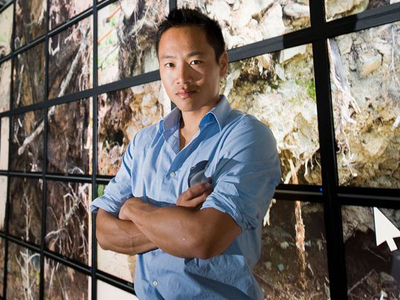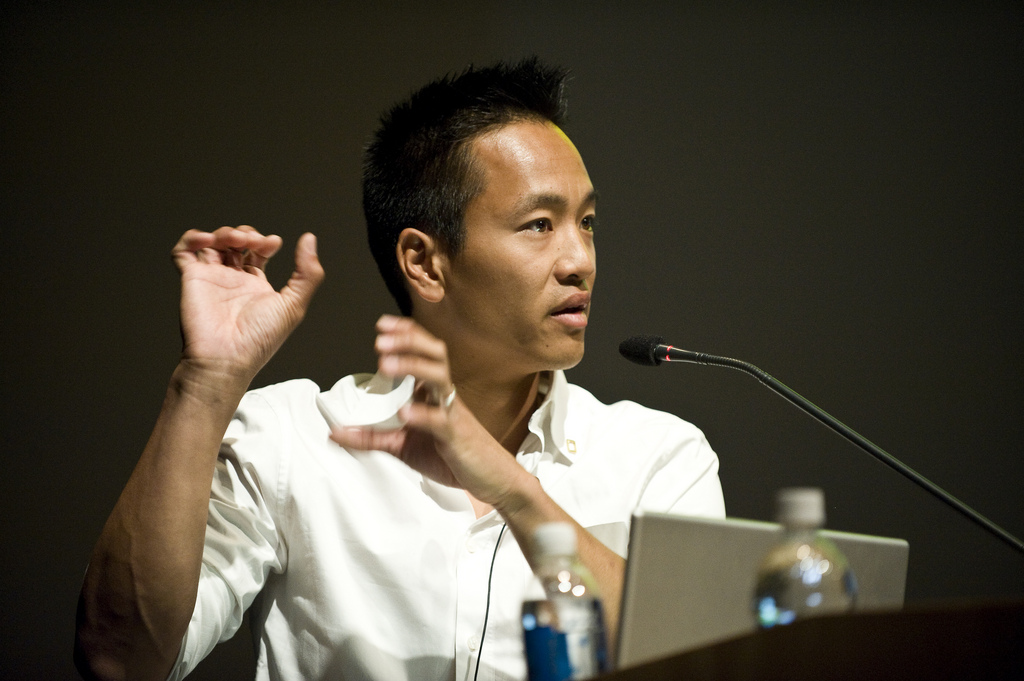UC San Diego Alumnus Named National Geographic Emerging Explorer
San Diego and Washington, D.C., May 18, 2010 -- Fourteen visionary, young trailblazers from around the world — including University of California, San Diego alumnus Albert Yu-Min Lin, ’04, M.S. ’06, Ph.D. ’08 — have been named to the 2010 class of National Geographic Emerging Explorers. The new Emerging Explorers are introduced in the June issue of National Geographic magazine. [Lin is also scheduled to speak about using modern tools to hunt for an ancient past on June 1, when he addresses a UCSD Near You event in San Diego; click here for more information and to register.]
|
“We are extremely proud of the distinction that Albert Lin has brought to Calit2 and the UC San Diego campus, where he is opening up a whole world of possibilities for students interested in both science and cultural heritage,” said Ramesh Rao, director of Calit2’s UCSD division. “He is mustering new opportunities for UCSD students to put their newly acquired engineering knowledge to the test in creating technologies for National Geographic explorers and expeditions.”
With Lin as its program manager, UC San Diego and National Geographic recently announced the UCSD-NGS Engineers for Exploration program, to give graduate and undergraduates students hands-on experience in developing new remote imaging software and hardware for explorers. [Click here to read a news release about the program.]
|
Emerging Explorers are part of the National Geographic Society’s Explorer Programs, which include 13 Explorers-in-Residence and 12 National Geographic Fellows. The latter include CISA3 Director Maurizio Seracini, a UC San Diego alumnus (Bioengineering, Class of ’73).
The Valley of the Khans Project is one of several current CISA3 projects to have received funding from the National Geographic Society. Seracini leads a team trying to locate a lost masterpiece mural by Leonardo da Vinci, "The Battle of Anghiari," and CISA3 Associate Director Thomas Levy is an archaeologist who has uncovered evidence that copper production at a dig site in southern Jordan began several centuries earlier than previously believed -- dating back to the Biblical era of David and Solomon.
|
“Using traditional archaeological methods would be disrespectful to believers," Lin says. "The ability to explore in a noninvasive way lets us try to solve this ancient secret without overstepping cultural barriers. It also allows us to empower Mongolian researchers with tools they might not have access to otherwise. Today’s world still benefits from Genghis Kahn’s ability to connect East with West. He forged international relations that have never been broken. By locating his tomb, we hope to emphasize how important it is for the world to protect such cultural heritage treasures.”
Lin’s passion for exploring and preserving “our collective cultural heritage” was inspired by his last ten adventurous summers spent trekking solo through Pakistan, Cambodia, China, Tibet, Mongolia, and other remote regions.
Still eager for time in the field, Lin investigates sites with a high-tech tool kit that leverages photographs taken firsthand on the ground, images gathered from satellites and unmanned aircraft, GPS tracks from expeditions, and geophysical instruments. “There are many ways to look under the ground without having to touch it,” he observes. Thermal-imaging systems show what lies below by detecting heat signals and patterns emitted from the Earth. Magnetometry uses the Earth’s magnetic field to pinpoint subterranean clues as microscopic as bacteria in decaying wood. Ground-penetrating radar bounces back images revealing subsurface objects or disturbances. Tiny remote wireless sensors collect data from places no human can go.
“These new approaches could benefit all kinds of projects, from gaining a whole new view of regions like Mongolia to tracking animal migrations to mapping the brain,” notes Lin. “The real trick is synthesizing the vast amounts of information we collect into something that can be understood. My colleagues and I use visualization techniques to sort, relate, and cross-link billions of individual data bits.” He then uses visualization systems such as Calit2’s HIPerSpace tiled display wall and StarCAVE virtual-reality room to examine the data more closely.
National Geographic’s Emerging Explorers Program recognizes and supports uniquely gifted and inspiring adventurers, scientists, photographers and storytellers making a significant contribution to world knowledge through exploration while still early in their careers. The Emerging Explorers each receive a $10,000 award to assist with research and to aid further exploration.
“National Geographic’s mission is to inspire people to care about the planet, and our Emerging Explorers are outstanding young leaders whose endeavors further this mission. We are pleased to support them as they set out on promising careers. They represent tomorrow’s Edmund Hillarys, Jacques Cousteaus and Dian Fosseys,” said Terry Garcia, National Geographic’s executive vice president for Mission Programs.
PNY Technologies is a presenting sponsor of the Emerging Explorers Program and a National Geographic Mission Partner for Exploration & Adventure. The program is made possible in part by the Catherine B. Reynolds Foundation, which has supported the program since its inception in 2004.
In addition to UC San Diego’s Albert Lin, another Emerging Explorer is also focused on Mongolia – but she is interested in a period much, much further back than Genghis Khan, Bolortsetseg Minjin is a paleontologist who has unearthed numerous dinosaur and other mammal fossils in the Gobi Desert. Now, she has made attracting other young Mongolians to her field a priority, and Minjin has established outreach programs through schools, museums and the media. She also established the Institute for the Study of Mongolian Dinosaurs, which provides a research facility, expedition vehicles, equipment and scholarships for Mongolian students.
The other 2010 Emerging Explorers include:other 2010 Emerging Explorers include: environmental scientist Saleem H. Ali; mobile technology innovator Ken Banks; wildlife biologist Aparajita Datta; agroecologist Jerry Glover; bioarchaeologist Christine Lee; educator and activist Kakenya Ntaiya; electrical engineer Aydogan Ozcan; musician and activist Feliciano dos Santos; molecular biologist Beth Shapiro; wildlife researcher and conservationist Emma Stokes; herpetologist-toxinologist Zoltan Takacs; and marine biologist and conservationist Jose Urteaga.
Related Links
2010 Emerging Explorers Profiles
National Geographic
CISA3
Calit2
UC San Diego
UCSD Near You in San Diego Event
Media Contacts
Doug Ramsey, Calit2 UCSD, 858-822-5825, dramsey@ucsd.edu or Caroline Braun, National Geographic, (202) 862-8281, cbraun@ngs.org




